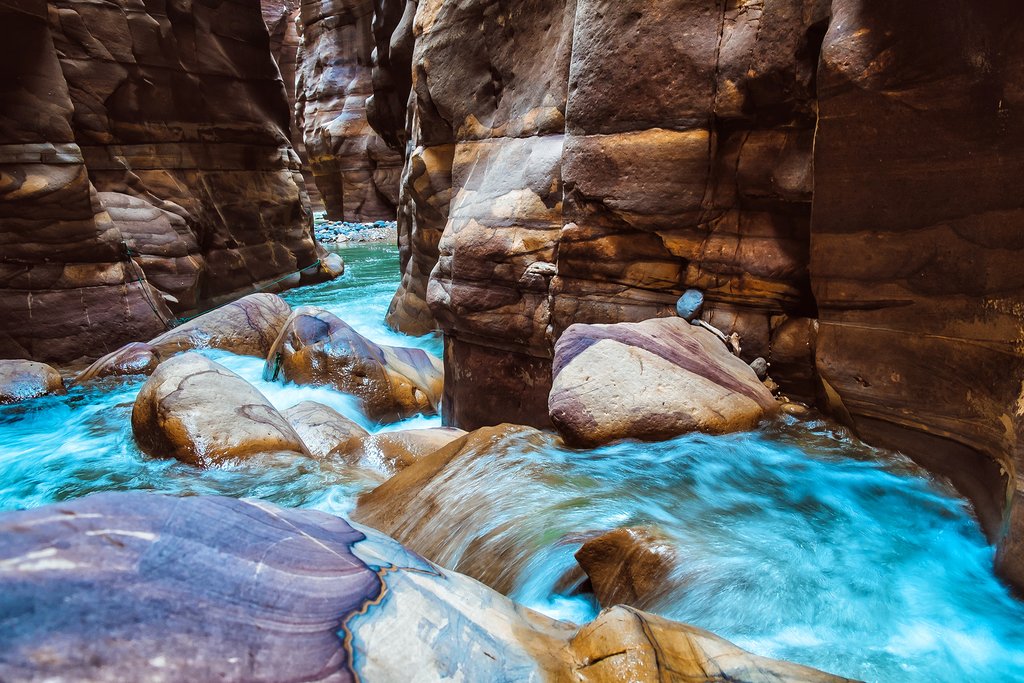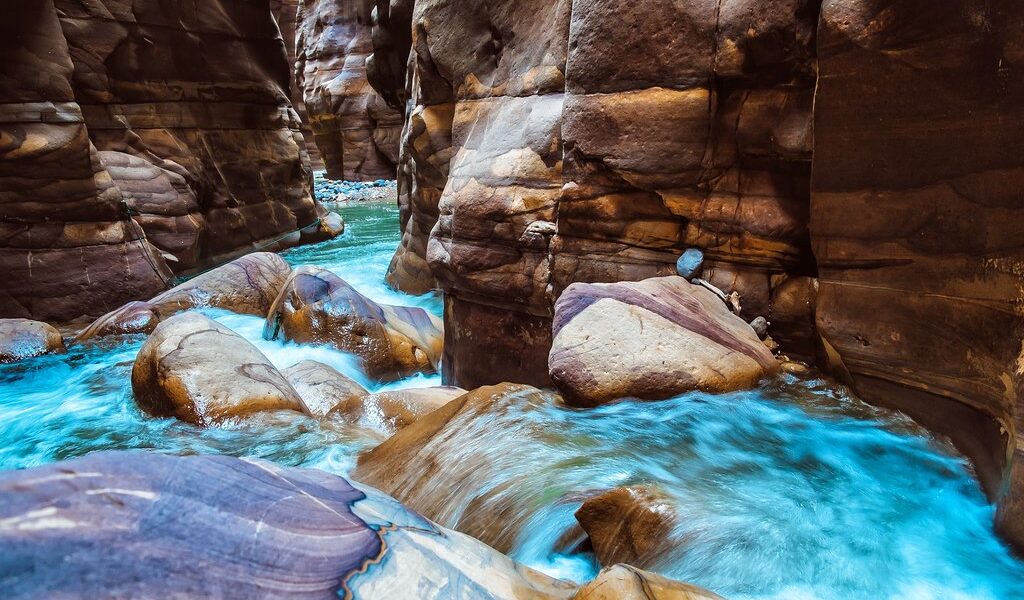
The hot, dry summer is at its peak, with July being the hottest (and very hot!) month. The spring wildflowers long ago faded, and colors get bleached out of the landscape by the hazy light. But don’t let this put you off. Choose your destinations wisely and July can still be enjoyable. Plus, you’ll be able to explore the most popular sights in relative solitude. And July hosts the country’s most vibrant festival—the Jerash Festival for Culture and Art.
## Weather in Jordan During July: A Comprehensive Guide
July in Jordan, alongside August, stakes its claim as the hottest period of the year. Temperatures in certain regions can soar past a sweltering 105°F (40°C), particularly when the infamous *khamseen* wind makes its presence known. This arid and occasionally forceful desert wind originates from the Arabian Peninsula, capable of instigating sandstorms that can blanket the region for extended periods, sometimes lasting several days. While the *khamseen* darkens the skies with its sandy veil, it also contributes to a rapid escalation in temperature, potentially raising it by as much as 20°F (10°C) in a relatively short span.
Travelers should be aware that higher elevations generally offer a respite from the intense heat experienced in the lowland areas. In Amman, for example, the average temperature hovers around a more agreeable 81°F (27°C). Petra tends to be a few degrees warmer than the capital, with temperatures occasionally climbing into the nineties. The southern city of Aqaba, however, truly bakes under the July sun, with average temperatures reaching a scorching 100°F (38°C). On some days, the mercury can even surpass 115°F (45°C), further exacerbated by an oppressive hot summer wind and high humidity levels. The eastern desert regions and the area surrounding the Dead Sea tend to experience similar temperatures to Aqaba, although thankfully, they are spared the added discomfort of high humidity.
Despite the intense heat, the summer air in Jordan is generally dry, which can make it more bearable than humid heat. To ensure a comfortable trip, it is advisable to pack a lightweight and breathable wardrobe. A wide-brimmed hat for shade, high-SPF sunscreen to protect against the intense sun, and sunglasses to shield your eyes are also essential. Above all, remember to stay hydrated by drinking plenty of water throughout the day. Embrace the local customs and adopt the practice of taking a siesta indoors during the hottest hours of the day, typically between noon and 3 pm, to avoid overexposure to the sun and heat.
## Crowds and Costs: Navigating Jordan in July
The peak of summer in Jordan tends to deter many international visitors, as it coincides with the hottest period in the Middle East. As a result, some of the most popular tourist destinations, such as the magnificent ancient city of Petra and the stunning desert landscapes of Wadi Rum, offer a more tranquil experience during this time. You can potentially enjoy these incredible sites in relative solitude, without the large crowds often associated with peak tourist season.
In addition to fewer crowds, July offers the advantage of lower prices. Airfares typically decrease during the low season, and hotels often reduce their rates to attract visitors. While the prices are at their most attractive during this period, it’s important to be aware that some restaurants and other businesses that rely heavily on the tourist trade may temporarily close for the low season. So, it’s always best to check with establishments beforehand to avoid disappointment. If you’re considering combining your trip to Jordan with a visit to Saudi Arabia, be aware that the Hajj pilgrimage to Mecca traditionally occurs in July, which may impact air travel to and from Saudi Arabia. During this period, flights can be fully booked by pilgrims for two weeks before and after the pilgrimage, and airfares may increase significantly.
## Where to Go: Exploring Jordan’s Treasures in July
The sweltering heat of mid-summer makes it an excellent time to focus on exploring Jordan’s indoor, air-conditioned cultural sites. For those with an interest in automobiles, or even for those simply seeking a fascinating experience, a visit to Amman’s Royal Automobile Museum is highly recommended. This museum showcases the late King Hussein’s personal collection of cars and motorbikes, offering a unique glimpse into his passions. The remarkable collection spans a wide range of vehicles, from a WWI armored car famously used by Lawrence of Arabia to a futuristic Martian rover driven by Matt Damon in the film The Martian. Dusty rally cars serve as testament to King Hussein’s passion for racing, a passion that has been passed on to his son, King Abdullah. The late King’s love of speed is further evidenced by the presence of a 1952 Aston Martin DB2, a Bugatti Veyron, a Ferrari F50, and an extremely rare Mercedes-Benz SLR McLaren Stirling Moss, considered one of the fastest cars ever produced. In addition to the impressive car collection, the museum also features more than 50 motorbikes, ranging from a Harley-Davidson Road King that King Hussein used to ride through the desert with Queen Noor on the back, to a futuristic *Tron Legacy*-inspired electric motorbike.
July is also an ideal time to visit Jerash, particularly as it is the month of Jordan’s most important cultural event: the Jerash Festival of Culture and Arts. This vibrant festival offers a colorful celebration of Jordanian arts, dance, food, literature, and music, providing a unique opportunity to immerse yourself in the local culture. Best of all, the spectacular Roman ruins for which the city is famous serve as the backdrop for many of the festival’s events. During the day, explore the historical sites of Hadrian’s Arch, the Temple of Zeus, and the remarkably preserved paved Forum, with its impressive arc of 56 Ionic columns. In the evenings, enjoy memorable performances, ranging from ballet to local folkloric dances, set against the dramatically floodlit backdrop of the Jerash ruins.
## What to Do: Embracing Adventure and Escaping the Heat
For travelers who embrace the desert heat and yearn to channel their inner Lawrence of Arabia, a camel ride in Wadi Rum offers an unforgettable experience. Exploring the desert in this traditional manner allows you to connect with nature and experience the landscape as the Bedouin have for thousands of years. While a 4WD tour can also be an exhilarating way to explore Wadi Rum, a camel ride provides a more intimate and authentic experience. Regardless of your chosen mode of transportation, remember to dress appropriately for the sun and heat. Short, hour-long rides are available, but a multi-day excursion is highly recommended to truly immerse yourself in the desert landscape. Consider heading “To Aqaba!” as part of your desert adventure.
The eastern desert of Wadi Rum also presents an unparalleled opportunity for stargazing at night. The crystal-clear desert sky is remarkably dark, revealing the breathtaking expanse of the Milky Way galaxy and its billions of stars. The sheer silence of the desert further enhances the humbling experience. In July and August, you can witness the prolific Perseids Meteor Shower streaking across the sky. Unless there is a bright moon, you can expect to see dozens of fireballs per hour as space debris ejected by the comet Swift-Tuttle enters the Earth’s atmosphere and burns up.
For those seeking respite from the heat, canyoning at Wadi Mujib offers a refreshing escape. Located in the hills east of the Dead Sea, Wadi Mujib features cascades of water tumbling down a narrow gorge. Adventure seekers can experience the thrill of rappelling down waterfalls, plunging down natural waterslides, and swimming in refreshing pools. A trek through the canyon, which stretches 40 miles (70 km) to the Dead Sea, offers stunning views and a chance to connect with nature. The area is protected within the Mujib Biosphere Reserve, which is home to a variety of rare wildlife species.
## July Events: Festivals and Celebrations
* Jerash Festival of Culture and Arts: Jordan’s premier cultural festival showcases the country’s rich artistic heritage through dance, food, literature, and music, all set against the backdrop of the spectacular Roman ruins in Jerash.
* Eid al-Adha: Also known as the “Festival of Sacrifice,” this important religious holiday commemorates Ibrahim’s willingness to sacrifice his son as an act of obedience to God. It is celebrated with feasts and acts of charity throughout Jordan.
## Traveling to Jordan in July? Explore these Itineraries
* 3 Days in Northern Jordan: Immerse yourself in the culture and history of Amman, Jerash, Ajloun Castle, and other significant sites in the relatively cooler northern highlands.
* Jordan: Petra & the Dead Sea – 3 Days: This itinerary is designed for travelers with limited time, highlighting two of Jordan’s most iconic destinations: the Dead Sea and the ancient rock-carved city of Petra. It also includes a chance to immerse yourself in local culture through an authentic cooking class.
B-1479

